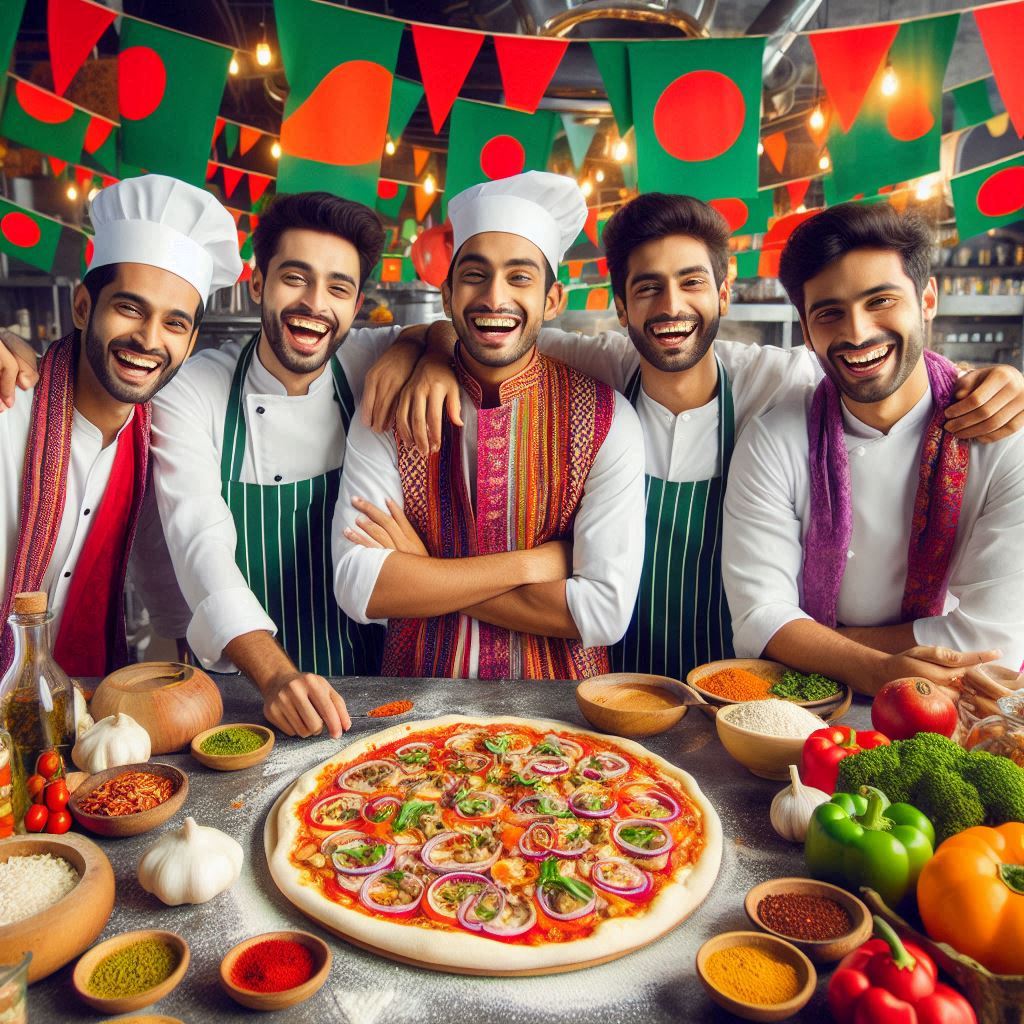
by Dr Rahim Said
It began with a pizza in Rome. Or rather, it began when nobody noticed who was making the pizza in Rome.
A recent dispatch from Shafiqul Alam, a perceptive Bangladeshi journalist, pulled the curtain back on one of the great untold culinary coups of our time: in the overwhelming majority of Italian restaurants across Europe — including Michelin-starred establishments — the chefs behind the scenes are not sun-drenched, Vespa-riding Italians named Marco and Giovanni. No. They are men named Shafiqul, Mizanur, and Jashim from the Bengal Delta.
Apparently, if you sneak into the kitchen of any high-nosed Italian eatery in Rome, Paris, Vienna or Berlin, you’ll hear the unmistakable lilt of Bangla over the sizzle of garlic in olive oil.
Raviolis delicately pinched by hands more familiar with rolling chapatis. Wood-fired pizzas launched with the precision of a Shariatpur fisherman casting a net. Italians have quietly conceded the kitchen, content to run the till and scowl aesthetically at tourists.
And now — dear Malaysians — it’s our turn.
Yes, the great Bangladeshi culinary conquest is making landfall in Malaysia. Having mastered the art of the pizza oven, they are now setting their sights on our woks, tandoors, and banana leaf joints.
It won’t be long before the kopitiams of Ipoh, the night markets of Alor Setar, and the cafes of Damansara Heights are staffed by Bangladeshis fluent in both the nuances of al dente pasta and the sacred art of sambal.
Imagine the possibilities:
• Pizza Rendang Daging, wood-fired to perfection in Brickfields.
• Laksa alla Toscana, where the broth is simmered lovingly by a chap who once ran a trattoria in Bologna.
• Tandoori Gnocchi served with mint chutney foam at a hipster café in Bangsar.
• Or even a Michelin-starred nasi lemak, where the sambal has subtle notes of sun-dried Sicilian tomato.
The culinary future of Malaysia isn’t local, my friends — it’s trans-Bengali.
Already, whispers abound. A popular mamak in Setapak reportedly hired a Bangladeshi pizza maestro to manage their roti canai station. The result? A perfectly tossed, evenly blistered roti so elastic it was mistaken for Naples-style flatbread by an Italian tourist who wept openly.
Meanwhile, a kopitiam in Johor Bahru allegedly flies in an “Italy-trained” Bangladeshi chef to fry its char kuey teow. “So much wok hei, yet so much pizza soul,” remarked one confused food blogger.
And then there’s Dhaka.
Returnees from Rome and Milan have already opened pizzerias here and there serving pies so authentic that one Italian expat reportedly shouted “Mamma Mia!” before bursting into tears. Some are calling it culinary reverse colonialism. I call it genius.
It’s a matter of time before Malaysia’s tourism board gets in on the action. “Visit Malaysia 2030: Authentic Italian Cuisine by Our Bangladeshi Culinary Artisans.”
Picture a promo video — sunsets over KL Tower, a Bangladeshi chef tossing pizza dough in slow motion, while a voice-over croons, “Where East meets West, and Sylhet meets Sicily.”
Let’s be honest — our local lads aren’t rushing to work in kitchens anymore. Who wants to flip char kuey teow for 12 hours when you can be a TikTok star with three followers and a ring light? Into this void, steps in the Bangladeshi culinary cavalry, armed with experience, humility, and the uncanny ability to master whatever cuisine you put in front of them.
So, what’s next?
French patisseries in Shah Alam run by men from Mymensingh? A Japanese omakase in Melaka where the sushi chef’s name is Abdul Kuddus? Don’t laugh — it’s happening.
They came for the construction sites. They stayed for the pizza ovens. And now, they’re coming for your wok.
And frankly, I say let them.
Because if their pizzas at many Michelin-starred joints are anything to go by, our future is in very, very good hands.
WE